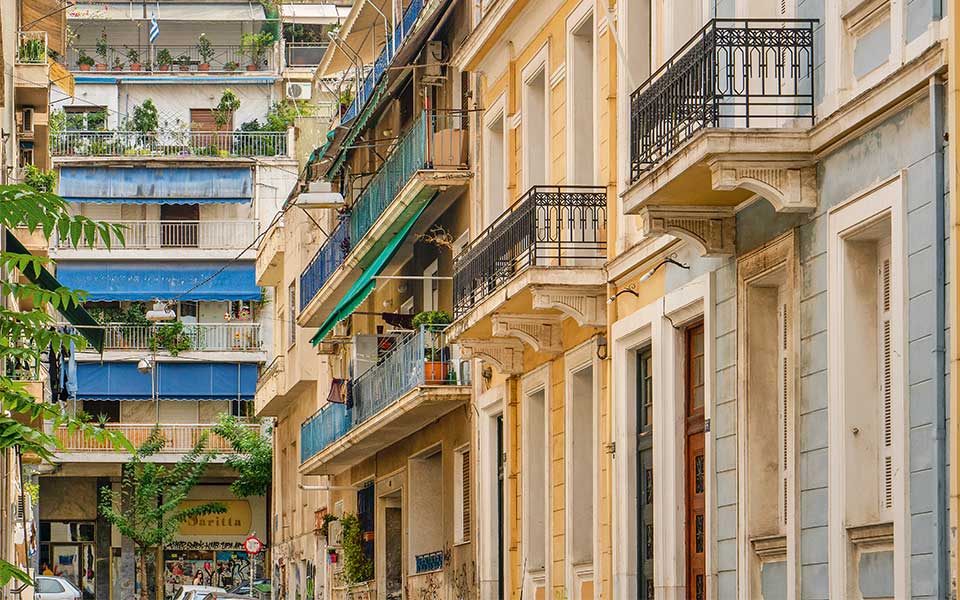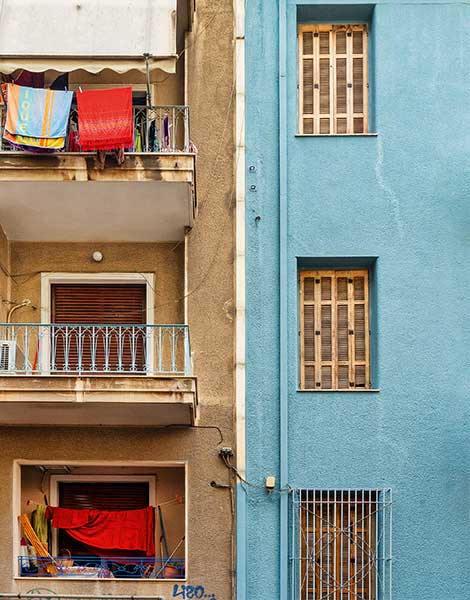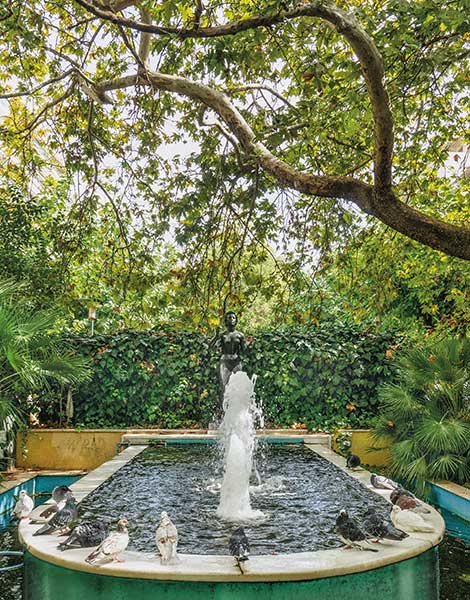Athens’ Most Coveted Culinary Hotspots
Athens sizzles with culinary creativity, blending...

The inner city neighborhood of Kypseli comprises a beautiful gallery of 20th century architecture.
© Perikles Merakos
For many Athenians, Fokionos Negri, the most popular pedestrianized residential street in Athens, brings to mind contradictory images. On the one hand is Kypseli’s upper-middle-class past and former glory, and on the other is the dynamic present embodied in its new demographic makeup.
I return often to Kypseli, one of the most densely populated urban districts in Europe, not only to walk through the streets where I formed my earliest memories, but also to see what it’s becoming now.
And what’s being born there defies any stereotype about the decline of a middle-class neighborhood. I believe every Athenian and every visitor to the city should come see Fokionos Negri to experience constant renewal and reinvention of the present.
Even in my childhood, the river that had once flowed through the neighborhood was already a thing of the past. Instead, there was the street. Today it’s lined with tall trees, and benches where you can find retirees, mothers and their babies, African couples and Asian youths.
I walk down the pedestrianized street knowing that below me run subterranean waters that continue even today to quench the thirst of the trees. I enjoy the greenery and the presence of water, invisible and visible – there are fountains as well as the underground river – and each time I visit, I make sure to stop at the statue of the dog near the Municipal Market.
There, I pay tribute to the trusted companion of my childhood games, and I’m always happy to see him surrounded by children running around, shouting and stroking his marble fur.
But if the statue of the dog touches an inner world and a realm of memories, the area of Fokionos and its surrounding streets comprise a beautiful gallery of Athenian middle- and upper-middle-class architecture dating chiefly from the period 1930-1970. Four decades of Athenian modernism are represented, from art deco elements and residential expressions of Bauhaus to the mid-century modernism which pervades all of Athens and defines the appearance of its old neighborhoods.

The coexistence of 20th-century buildings of different styles is a characteristic trait of Kypseli and other Athenian neighborhoods.

Water features are present at various spots along the pedestrianized Fokionos Negri Street.
© Perikles Merakos
Let’s take one of those little streets and walk together for a while.
Sporgilou Street, entirely without significance to anyone who doesn’t live nearby, begins at Fokionos Negri, crosses Syrou Street, and dead-ends into Zakynthou Street. It is, in other words, in the very heart of Kypseli, and it’s a place where one finds two-story art deco buildings, houses built according to the modernism of the 1930s, eclectic homes from the 1920s, and apartment buildings from the 1950s and 1960s, all in the space of a few city blocks.
All around, whichever street you choose to walk down, you’ll see more or less the same mix, but why not head with me towards Aghiou Georgiou Square, where people gather for coffee, food, and socializing. From Fokionos Negri, you can get there in ten minutes, taking any number of streets; one option is Sporgilou to Zakythou to Kypselis to Aghiou Meletiou.
It’s a walk thick with 20th-century architecture that will let you see the spirit of old Kypseli. From Aghiou Meletiou, turn left onto Sporadon, and at the corner of a small lane called Spetsopoulas, you’ll find a wonderful modern concept store that serves coffee and homemade sweets, sells clothes and stationery, and hosts a gallery in the basement.
Aghiou Georgiou Square is just a few steps further down, by way of Eptanisou Street, thick with bitter orange trees. The scent from those trees could be the hallmark of Athens.
Athens sizzles with culinary creativity, blending...
A natural spa by the Athenian...
From Santorini sunsets to ancient ruins,...
Beneath the busy streets of modern...